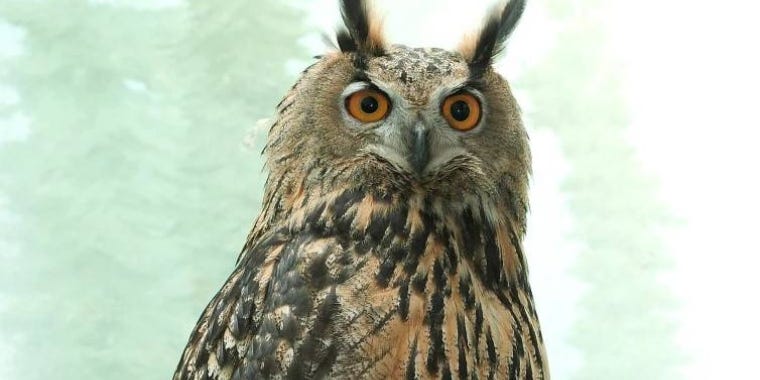Cat Hartwell (CH) currently works as a climate change and public health researcher in Seattle, WA.
Cat here. During the height of the pandemic lockdown in Brooklyn, my husband and I joined the 45 million Americans who “bird.” With more time at home, and less traffic on the roads drowning out the sounds of the resident robins and mourning doves that secretly lurk all over the borough, we could hear the natural soundscape of our environment for the first time. “CoooOOOO-woo-woo-woo,” cried the mourning dove from the rooftop across the courtyard of our apartment. Had he always been there? Suddenly, we were hearing a cacophony of bird songs, and they were loud!
This discovery coincided with our introduction to a beautiful and complicated board game called Wingspan that is worthy of its own WITI. The combination of the game’s beautiful bird illustrations at night and birdsong melodies outside our windows by day had us fully embracing a hobby that we never even knew we needed. We quickly signed up for an online bird identification course through Cornell University. I bought a birding journal. I was gifted a pair of binoculars. Before I knew it, we were all the way inside of a subculture of urban birdwatchers. Suddenly, we were those people in Prospect Park stopping to gape at blue herons and nearly walking into traffic tracking a red-tailed hawk across Fort Greene..
In late 2021, my life path took an unexpected turn when I accepted a job in Seattle. That December, we packed up our car and crossed the contiguous United States to reach our apartment on Lake Union. Waking up those first mornings in our new town, we were greeted by a lake, mountains, evergreen trees, and an unfamiliar soundscape full of birds I hadn’t heard (or seen) before. Over time, I would come to recognize through my binoculars the Anna’s hummingbirds who stay over winter in the PNW, or the Cormorants, Mergansers, Stellar’s Jays, and more that pop in and out of town depending on the season. My husband and I were by far the youngest students in an owl identification class in Seattle’s Seward Park, and our greatest thrill to date has been getting to know the two majestic bald eagles who live in the neighborhood and who we spot many mornings over coffee.
In February 2023, when someone breached a fence in the Central Park Zoo to cut a hole in a mesh fence to release a 13-year-old Eurasian eagle-owl named Flaco, I joined millions of New Yorkers and bird lovers around the world tracking his journey. I followed the daily news of Flaco more closely than that of any celebrity. Flaco was magnificent, resilient, and free.
On the evening of February 21, I was gutted when I read the news that a beloved NYC bald eagle named Rover had been hit by a car on the West Side Highway two days earlier while scavenging for food. A lump lodged in my throat as I went to sleep that night, mulling over how very un-noble Rover’s death was for such a regal bird. I pondered how many eagles must die from cars all the time. (It turns out that yes, vehicle collisions and lead poisoning are the leading causes of eagle deaths). That didn’t exactly make me feel better. Then two days later, Flaco died after colliding with a residential building in the Upper West Side—a preventable fate for almost a billion birds every year in the U.S. alone. This time, I couldn’t fight back the tears. Days after the news broke, I was still grieving for two birds that I had never even seen with my own eyes.
Why is this interesting?
Grief is a natural human reaction to loss, and we are living through an intense period of ecological loss—entering what some scientists are dubbing a sixth extinction, previously covered in a WITI. Ecological grief is “the grief felt in relation to experienced or anticipated ecological losses, including the loss of species, ecosystems, and meaningful landscapes due to acute or chronic environmental change.” (Nature, 2018). While neither the death of Rover nor the death of Flaco are climate-related, they can be blamed in some way on human-driven environmental changes. The collective mourning that has taken place in response to the loss of Flaco is a form of ecological grief.
Why do so many of us feel so deeply for birds? One of the instructors for Cornell’s birdwatching course says it’s because they’re the closest that we get to truly wild creatures in our midst. For those of us living in cities, this feels even more true.
As we humans continue to alter our environment, there are some steps that we can take to protect our feral friends. “Natural bridges” are being built around the world to create safer spaces for wild animals to traverse. And in the days after Flaco’s death, the legislature in New York introduced and renamed the “Bird Safe Buildings Act” to the “Feathered Lives Also Count” (FLACO) Act, to honor the owl’s short-lived impact in New York City. If passed, the bill aims to reduce bird deaths in New York by incorporating bird-friendly designs into new and redeveloped buildings. These efforts won’t solve the issue of the sixth extinction, but they’re better than sitting idly and doing nothing in response. (CH)
—
Thanks for reading,
Noah (NRB) & Colin (CJN)
—
Why is this interesting? is a daily email from Noah Brier & Colin Nagy (and friends!) about interesting things. If you’ve enjoyed this edition, please consider forwarding it to a friend. If you’re reading it for the first time, consider subscribing.




